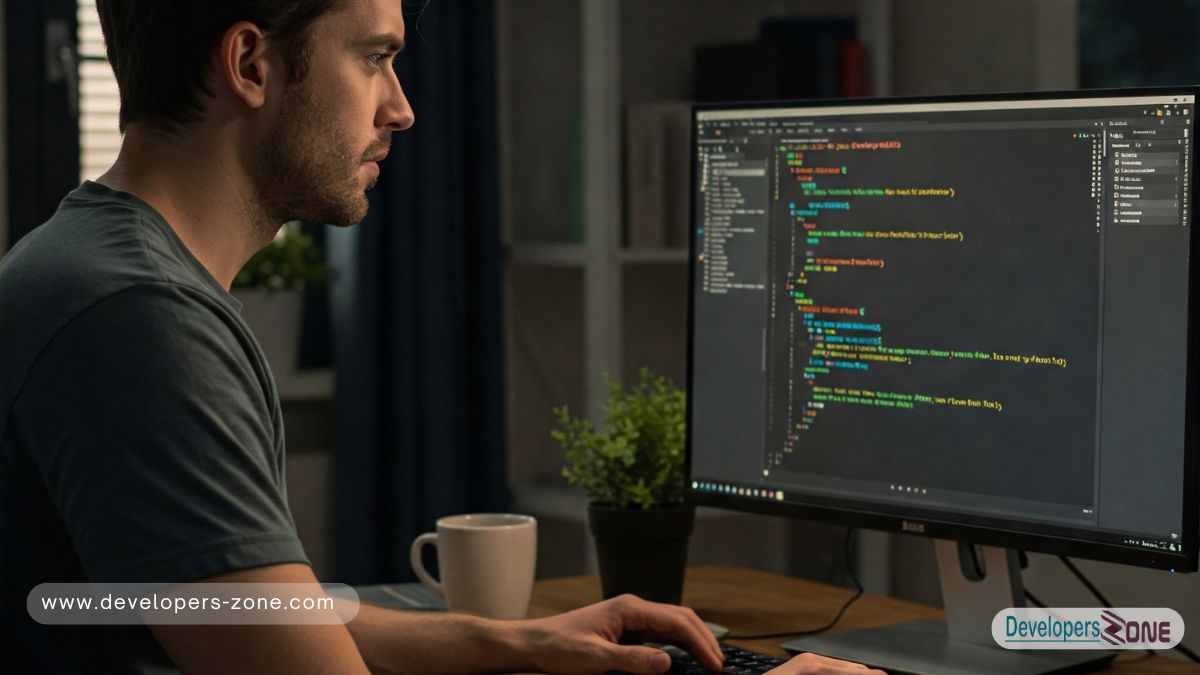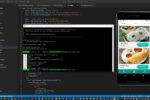The react native framework is powerful, but dependence and version conflict can be disappointing. A step-by-step guide will run through solving these challenges. If you have ever encountered unexpected errors after installing a new package, you are not alone! Follow this guide to fix React Native issues, maintain compatibility, and keep your app running smoothly.
INDEX
- Identify the Conflict
- Restore, Clear Cache, and Reinstall Dependencies
- Check for Compatible Versions
- Manually Resolve Conflicts in package.json
- Use React Native Doctor
- Upgrade React Native Correctly
- Fix iOS Dependency Issues
- Check for Breaking Changes
- Seek Help from the React Native Community
- Consider Using a Monorepo Setup
- Final Thoughts

1. Identify the Conflict
First, determine what the problem is. Read the error message carefully- Reacts native usually indicates conflicting dependence. run:
expo start -cAlso, check the package. run: package.json, yarn.lock, or package-lock.json
npm list # For npm users
yarn list # For Yarn usersDuplicate can automatically clean the dependence. If the conflict continues, move forward in the next stages.
Understand dependence struggle The dependence in a project is interconnected, which means updating one package can break the other. Understanding how package versions work (major, modest and patch updates) are important to prevent such issues. The cementic version follows this structure:
-
- 1.0.0 (Major update – may include breaking changes)
-
- 1.1.0 (Minor update – new features, backward-compatible)
-
- 1.1.1 (Patch update – bug fixes, backward-compatible)
Check the dependence tree using the use:
npm dedupe“Follow these steps to identify conflicts, identify clear caches, and to solve mismatches with reactions indigenous dependence errors!
This helps imagine all installed dependence and struggles more effectively.
2. Restore clear cache and dependence to fix React Native issues
Old cash files can cause dependence errors. Clean the cash and re -install the dependence:
“Fix the pesky dependence errors! Clean your cache and restore the dependence for a smooth reaction native experience.”[/caption]
For expo projects, also clear the expo cash:
Fix React Native Issues with this step-by-step guide: React Native reacts to cure indigenous dependence conflicts: diagnosis of issues, clear cash, and smooth app upgrade package for development.
Cash helps to approve
When you install dependencies, package managers speed up the installation using cached copies. However, chronic or corrupt dependencies can cause conflicts, errors, or crashes in your React Native app. Fix React Native Issues by resolving version conflicts, clearing the cache, or reinstalling dependencies. These issues often occur after updates or switching project versions, so regularly maintaining your dependencies is essential to Fix React Native Issues efficiently.
To fix React Native issues , forcing your package manager to bring fresh, updated versions to clean the cash. This simple step ensures a clean, stable dependence tree and saves the hours of debugging.
3. Check for Compatible Versions to Fix React Native Issues
Run:
npm outdatedReact react reacts to cure native dependence issues: a smooth app for experience to identify, resolve and prevent conflicts.
This reflects chronic dependence. If a package react struggles with the native, find a compatible version. To install a specific version:
npm install some-package@compatible-versionStruggle with React Native dependency issues ? This broad guide will help you to Fix React Native Issues by walking through the process of diagnosis and solution of struggles efficiently. With clear stages and practical solutions, you can ensure a smooth and more stable growth experience.
Understanding colleague dependence and Fix React Native Issues .Co-activist dependence shows which versions of dependence work together, helping to prevent compatibility struggles and ensure smooth development . See them in package.json file. If mismatched, install a compatible version manually:
npm install some-package@peer-compatible-version4. Manually Resolve Conflicts in package.json
If necessary, adjust the conflicting dependence in the package manually.
"dependencies": {
"react-native": "0.71.0",
"some-package": "^2.3.0"
}“Learn how to adjust your package and solve the reacting native dependence conflicts manually.”
For Yarn users, use resolutions:
"resolutions": {
"some-dependency":"1.2.3"
}“Struggling with issues of dependence in react indigenous? See this step-by-step guide to fix troubleshooting, fix errors and optimize the dependence of your app for a smooth growth experience!”
Then, restore dependence.
5. Use a response-man doctor
React indigenous contains a built -in diagnostic equipment. run:
"dependencies":{
"react-native":"0.71.0",
"some-package":"^2.3.0"
{“Get back to master -fix conflict, clear cash, and coding in the art of resolving reacting native dependence issues with this broad guide!”
Follow the recommendations to resolve any issue.
Reaction-General Reforms suggested by the doctor:
-
- Mismatched React versions → Update react and react-dom versions.
-
- Missing dependencies → Install missing packages.
-
- Incorrect SDK versions → Upgrade or downgrade to match requirements.
1. Solve struggles manually in the package
If necessary, adjust the conflicting dependence in the package manually.
“Learn how to adjust your package and solve the reacting native dependence conflicts manually.”
For Yarn users, use resolutions:
"resolutions": {
"some-dependency":"1.2.3"
}Struggling with issues of dependence in react indigenous? See this step-by-step guide to fix troubleshooting, fix errors and optimize the dependence of your app for a smooth growth experience!
Then, restore dependence.
2. Use react-native doctor
React indigenous contains a built -in diagnostic equipment. run:
“Get back to master -fix conflict, clear cash, and coding in the art of resolving reacting native dependence issues with this broad guide!”
Follow the recommendations to resolve any issue.
Reaction-General Reforms suggested by the doctor
-
- Mismatch reaction version → Update react and react-dom versions.
-
- Missing dependence → Install missing packages.
-
- Off SDK version → Upgrade or downgrade to match requirements.
6. Upgrade react native correctly
The reacting native can be difficult to upgrade, often the dependence introduces conflicts that disrupt the stability of your app. Without proper plan, updates can be broken by updates, unexpected errors, or issues of compatibility with third-party libraries. To avoid these damage, it is necessary to follow a structured upgradation process and verify all dependence before changing.
Struggle with dependence struggle in rectangular native?
Our comprehensive guide moves you through each stage, helping you solve issues efficiently and ensure a smooth upgrade. Whether you’re dealing with dependency conflicts, version mismatches, or breaking changes, we’ve got you covered.
Use react native upgrade helper
This official tool provides step-by-step guidance, comparing your current version with the latest release. This highlights the required code changes and helps you infection easily without unexpected surprise.
Before upgrade, always test in a separate branch, review the release notes, and check out the features. With the right approach, you can keep your react native app up to date while maintaining stability and performance.
Check the React Native Upgrade Helper for step-by-step upgrade guidance.
7. Fix iOS Dependency Issues
For iOS projects, make sure that cocopods dependency is correct:
“Struggling with dependence conflicts in reacting native? This step-by-step guide will help you to identify, solve and prevent errors to run your app smooth and run!”
If the issues remain, then manually re -install the pod:
“Struggling with reacting native dependence issues? This step-by-step guide will help you recognize and fix the struggles to bring back your app back to the track. From cleaning the cash to upgrade versions, learn to learn how to solve the errors!”
8. Check for Breaking Changes
When upgrading the package, it is necessary to review the notes released well to identify potential braking changes that can affect your app. To Fix React Native Issues , update updates in a controlled environment before applying them in production. The required adjustment hurry helps to maintain compatibility with new versions and prevents unexpected errors or accidents. Ignoring the update can lead to important debugging challenges, so staying active ensures a smooth growth process and a stable app experience.
What Are Breaking Changes?
Breaking changes occur when a package disrupts update compatibility, potentially breaks your existing code. From removed features to restructured APIs, these changes can be disappointing. Want to stay ahead? Learn how the API version prevents chaos and runs your projects smoothly.
It keeps the internal link informative, feeling natural and valuable. Tell me if you like another spin on it!
9. Seek Help from the React Native Community
If you’re stuck, check:
-
- GitHub Issues
-
- React Native Forums
-
- Stack Overflow
-
- React Native Discord
Many developers have encountered similar problems, and solutions are often readily available.
10. Consider Using a Monorepo Setup
For large projects, a monorapo setup dependence can significantly improve management and version reduce mismatches using LERNA or Turborepo. Instead of handling multiple repository separately, a monorpo structure allows all related packages for co -existence within single codebase. This setup streamlines cooperation, increases the code sharing, and simplifies updates, making it an excellent choice for complex applications.
-
- Better dependence management: Monorepos enables shared dependence in many packages, reduce repetition and ensure stability in the version. It reduces conflicts and improves overall stability.
-
- Rapid build: Tools such as Learn and Turborpo customize construction processes by cacing unchanged packages, significantly reduce construction time when managing many libraries and improves efficiency.
-
- Scalability: A monorapo structure is highly suitable for enterprise-level applications, allowing teams to work on various modules without affecting the entire system. This ensures better outfits and stability as projects grow.
Final Thoughts
It is important to keep your dependence updated, but always check for breaking changes before upgrading. Follow the best practices, such as using frequent package versions, locking dependence with package-lock.json or yarn. Lock, and unnecessary third-party libraries avoiding. Fix React Native Issues by reacting to the communities of the country, Jethb takes advantage of official documents for discussion and guidance when facing complex conflicts.
You can improve your app’s stability, minimize future conflicts, and guarantee a seamless growth process by keeping your dependence tree clear and well-pre-relevant. See this guide on React Native compatibility issues to find out more about possible problems. You can essentially manage your project if you use the appropriate tactics. Have fun with your coding!




